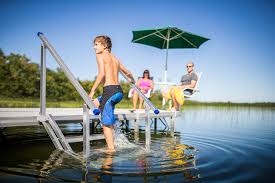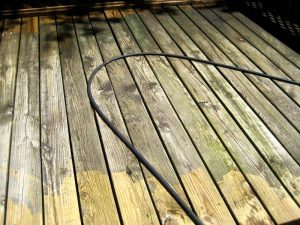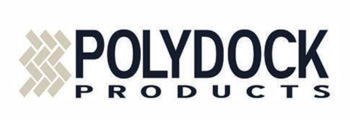How to clean Wood Decking without chemicals
How to Clean wood decking
How do you clean wood decking and restore the finish to look natural again – without damaging the environment? We all know that we need to avoid introducing pollutants into the water. This includes soaps and most other commercially available cleaning products. So what are your options?
According to NADRA (North American Deck and Railing Association) we first need to understand what mold is.
“Mold is the common term used to describe a growth on the surface of organic matter, caused by fungi, especially in the presence of dampness. Mold is Nature’s way of recycling organic matter and is often used interchangeably with the word mildew.
Under a microscope, mold has an octopus-like structure. Its legs attach to a surface in a web-like manner. Once a mold has successfully colonized, it turns a dark color and releases thousands of new spores. It usually takes about 3-4 months for untreated, fresh wood to start to turn white. After that, the dreaded gray you see on fences, decks and docks starts.
What makes mold grow?
Molds need three things to grow:
- Food,
- Water and
- Temperate weather.
Where does the “food” come from?
How about the dirt your family and pets put on the decking after walking across the lawn and beach? Then there’s the “diet leftovers” from the seagulls and geese.
How about the suntan oils and lotions people brought to the deck.
Finally, don’t forget about the “waste” from the seagulls and geese? You see it every day. Do you know what’ s lurking in that waste? OK – let’s move on to the next item.
Where does the water come from?
The water is a combination of rain, humidity and the water from your feet, your pets feet and the equipment you used that is now sitting on the deck panels.
Temperate weather?
Remember that sunshine and mild temperatures you crave so much? Mold loves it too. In fact, if it’s too hot the mold simply goes dormant and waits for better conditions to start the process all over again.
What happens when all these things come together?
When the spores find a favorable environment, they will germinate. What constitutes a favorable environment is different for each species. The spores settle out of the air. As a result they will be more prevalent on horizontal surfaces (like your dock boards). The mold does not migrate, but rather it establishes colonies and releases even more spores.
First Step to clean wood decking
Make a distinction about what type of wood decking you have. Why is this important? Wood is Wood – Right? Wrong!
Some “treated woods” may contain toxins which are harmful to the environment and require a different approach to cleaning. Most experts would prefer to have nothing entering surface waters other than clean rain water. At the same time we also need to be able to keep our docks clean so they are safe and sanitary to walk on. To avoid fines and protect the water, the DNR requires bio-degradable solutions for cleaning, if used at all.
Natural, untreated wood or Pressure Treated?
Which wood do you have? This is important because treated wood may contain toxins which can harm fish and harm the environment. NEVER clean treated wood over water.
Do you have Natural, untreated wood (usually cedar, in some cases, pine) – OR – Pressure Treated wood?
If unsure what you have, there is a simple way to find out. Look UNDER the decking and see if it is a natural wood color (a very light or natural wood color). It may also be slightly gray. but has no “green colors” on it.
It has a “green tint” to it? A green color indicates that it is pressure treated. Be sure to check several panels to be sure. If the sunlight has not gotten to the bottom of the decking, treated wood will retain a “green” look for a long time. Do not attempt to clean this decking over the water.
Another way is to call the dealer to see what they used.
Untreated, Unpainted, Unstained Cedar or Pine?
To clean untreated, unpainted or stained cedar or pine decking is always a challenge but there are a number of ways to do it.
Among the choices for untreated wood are:
- Use a pressure washer (the most popular way)
- Hand scrub the decking with a commercially available biodegradable cleaner like “OxiClean” (not very effective from the author’s experience)
Using a Pressure washer
A word of caution – In all cases the use of safety gloves, face masks or eye protection is highly recommended to clean wood decking.
The use of a pressure washer is probably the most popular way to clean wood. However, it must be done very carefully due to the “grain” of the wood.
Too much pressure or spraying “against the grain” can cause serious damage to the decking and raise the wood grain. Wood grains that are raised will look like “splinters or fuzz” on the surface of the wood..
- Always spray in the direction of the grain – never “against the grain.” This can be hard to do since many people are not familiar with how the natural wood grain will look in its original state. It also depends on the way the boards are mounted on the dock. Keep in mind that even though one board has the grain going “left to right”, the next board may be “right to left”.
- Never allow the pressure head to get closer than 6-12 inches from the wood. This depends on the hardness of the wood, the pressure of the washer and the type of spray tip you are using. The less pressure at the spray head, generally the closer you can get to the surface. It is also recommended that a 20-40 degree “fan tip” be used. This way the water pressure is not too intense for the wood grain if you make a mistake in the grain direction.
Actual experience
Note – The author used a 1600# pressure washer, with a turbo tip (this sprays in a rotating circular motion) to clean wood pine decking. After raising the grain several times following the previous method explained above, The author found that it was faster and safer to clean the wood by spraying across the boards no matter which way the grain was going.
Looking at the picture above (they obviously had gone lengthwise down the boards). I went back and forth cross ways across 4-8 boards in a stroke. The tip I used is very aggressive and yet it never raised the grain on a deck which was at least 20 years old. You will need to experiment on your own wood to find the “sweet spot” between having too narrow a spray pattern and getting the right speed so it does not take all day. This approach was very effective and I did not need chemicals nor did I “raise the grain” unless I stayed too long in one spot.
Hand scrubbing
The use of a hand brush and a commercially available product like “OxiClean” is a safer way to wash the decking. “OxiClean” breaks down to oxygen, water and soda ash so it won’t harm the environment. Be sure to rinse the decking with clear water after the cleaning process.
If the product you choose has oxalic acid (very corrosive) or chlorine bleach we strongly recommend that you do not use it because it is not bio-degradable. As an extra precaution check the label of any product you plan to use to see if it contains harmful ingredients such as hypochlorite bleach.
Oxygen bleaches can be irritating to the skin and harmful to your eyes and lungs
NEVER use chlorine bleach as it is harmful to your skin AND the environment and could get you a major fine from the DNR.
Pressure Treated Wood
Cleaning pressure treated decking gives you fewer options – actually ONE option. Oxidizing agents, even the humble sodium percarbonate, can react with some types of pressure treated wood to release chromium and arsenic into the environment. These chemicals are toxic to people and aquatic life at even fairly low concentrations. Avoid the use of ANY of these products and NEVER clean this type of decking over the water with any chemicals.
So what can you use? Clean water and good old fashioned elbow grease is the recommended method.
You have a major investment in your dock – clean the wood wisely.
REMEMBER
Pier & Waterfront Solutions (PWS) specializes in all ShoreMaster accessories for docks and lifts. PWS is located in the center of Door County at 7325 St Hwy 57, south of Sturgeon Bay at the intersection of Idlewild Road. Our staff looks forward to serving all of your waterfront needs.
Found this article helpful? Go to “NEWS” on any page of our website for a complete list of articles meant to keep you informed on the latest product information and maintenance issues. Check out our “older entries” also.
The wide variety of articles on dock and boat lifts issues will answer many of your questions. PWS believes that an informed consumer makes better decisions.
Call Jerry at 920-493-4404 or Email Jerry@wisconsinpws.com for more information.
. Coming Soon – “The PWS Store” on our website.








